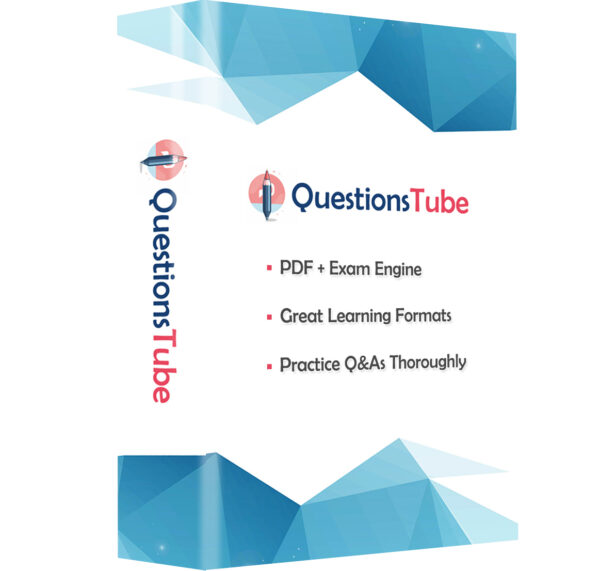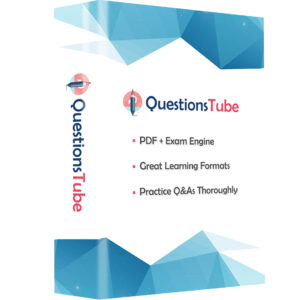Order our HPE6-A75 Practice Questions Today and Get Ready to Pass with Flying Colors!
Product Description
Introduce HPE HPE6-A75 Exam
As one of the requirements for Aruba Certified Edge Professional (ACEP), the HPE6-A75 Aruba Certified Edge Professional Exam will allow you to select three sections from the list: Design Professional, Mobility Professional, Switching Professional, ClearPass Professional, or Security Professional. Each of the three sections must be passed. You will need to score 70% in each of the 3 sections in order to pass the entire exam. The ideal candidates for the HPE6-A75 exam are professionals in Design, Mobility, Switching, ClearPass and Security. It is a proctored exam. The exam duration is 90 minutes, and it is available in English. However, this exam will be retired on November 01, 2023, you need to make sure you can complete it before that day.
Learning HPE6-A75 Exam Objectives Is Strongly Recommended
- Given an outline of a customer’s needs, determine the information required to create a solution.
- Given a scenario, evaluate the customer requirements to identify gaps per a gap analysis, and select components based on the analysis results.
- Given a scenario, translate the business needs of the environment into technical customer requirements.
- Given a scenario, select the appropriate products based on the customer technical requirements.
- Given the customer requirements, design the high-level architecture.
- Given a customer scenario, explain how a specific technology or solution would meet the customer requirements.
- Given a customer scenario, choose the appropriate components that should be included on the BOM.
- Given the customer requirements, determine the component details and document the high-level design.
- Given a customer scenario, determine and document a detailed network management design.
- Given a customer scenario, design and document a detailed network security solution.
- Given a customer scenario, design and document the logical and physical network solutions.
- Given the customer scenario and service level agreements, document the licensing and maintenance requirements.
- Given the customer’s requirements, explain and justify the recommended solution.
- Integrate components of the Aruba Mobile First Architecture.
- Differentiate between standalone mode and Master Controller Mode (MCM) features and recommend use cases.
- Differentiate the use of packet forwarding modes (tunnel, decrypt-tunnel, split-tunnel, and bridge).
- Differentiate between redundancy methods, and describe the benefits of L2 and L3 clustering.
- Explain Remote Access architectures and how to integrate the architectures.
- Describe and differentiate advanced licensing features.
- Configure Remote Access with Aruba Solutions such as RAP and VIA.
- Configure and deploy redundant controller solutions based upon a given design.
- Configure a Mesh WLAN.
- Enable multicast DNS features to support discovery across VLAN boundaries.
- Configure role derivation, and explain and implement advanced role features.
- Configure an AAA server profile for a user or administrative access.
- Implement Mobility Infrastructure hardening features.
- Explain Clarity features and functions.
- Implement Voice WLAN based upon a given design.
- Configure primary zones and data zones to support MultiZone AP.
- Implement mobility (roaming) in an Aruba wireless environment.
- Implement tunneled node to secure ArubaOS switches.
- Use AirWave to monitor an Aruba Mobility Master and Mobility Controller.
- Perform maintenance upgrades and operational maintenance.
- Troubleshoot controller communication.
- Troubleshoot the WLAN.
- Troubleshoot Remote Access.
- Troubleshoot issues related to services and security.
- Troubleshoot role-based access, per-port based security and Airmatch.
- Given a scenario with a design and/or customer requirements, determine an appropriate implementation plan.
- Install and Configure NetEdit
- Given an implementation plan, explain how to physically configure the switches.
- Given the implementation plan, explain how to configure Layer 2 technologies.
- Given an implementation plan, explain how to configure and validate Layer 3 interfaces, services, routing protocols and overlays.
- Explain multicast features and configuration concepts.
- Explain Aruba Switch security features and configuration concepts.
- Explain QoS Aruba Switch features and configuration concepts.
- Explain Aruba solutions integration and configuration concepts.
- Given a scenario, identify a network failure (IP mismatch, VLAN mismatch, hardware configuration or failure, port configuration).
- Given an action plan to remediate an issue, determine the implications to the network state.
- Given a scenario, determine the cause of the performance problem (QoS issue, Configuration issue HW and Software, end node).
- Given a scenario, determine a strategy to implement configuration management (maintenance, auditing, backup, archiving).
- Analyze data that represents the operational state of a network and determine the appropriate action.
- Intro to ClearPass
- ClearPass for AAA
- External Authentication
- Guest
- Onboard
- Endpoint Analysis
- Posture
- Operations and Admin Users
- Clustering and Redundancy
- Describe PKI dependencies
- Mitigate threats by using CPDI to identify traffic flows and apply tags and CPPM to take actions based on tags
- Explain methods and benefits of profiling
- Explain how Aruba solutions apply to different security vectors
- Explain Zero Trust Security in relation to Aruba solutions
- Explain WIPS and WIDS, as well as describe the Aruba 9×00 Series
- Describe log types and levels and use the CPPM ingress event engine to integrate with 3rd party logging solutions
- Explain dynamic segmentation, including its benefits and use cases
- Explain VPN deployment types and IPsec concepts such as protocols, algorithms, certificate-based authentication with IKE, and reauth intervals
- Set up secure authentication and authorization of network infrastructure managers
- Secure L2 and L3 protocols
- Deploy AAA for WLANs with ClearPass Policy Manager (CPPM)”
- Define and apply advanced firewall policies (appRF, PEF, WIPS, WebCC, UTM)
- Set up integration between the Aruba infrastructure and CPPM, allowing CPPM to take action in response to events
- Configure rogue AP detection and mitigation
- Deploy AAA for wired devices with CPPM
- Configure 802.1x Authentication for AP
- Deploy dynamic segmentation
- Deploy certificate-based authentication for users and devices
- Set up integration between the Aruba infrastructure and CPPM, allowing CPPM to take action in response to events
- Understand that Aruba SD-Branch automates VPN deployment for the WAN
- Design and deploy remote VPN with VIA
- Deploy and apply endpoint classification to the device
- Define endpoint classification methodology using active and passive methods
- Define, deploy, and integrate ClearPass and CPDI
- Investigate Central alerts
- Interpret packet captures
- Recommend action based on the analysis of the Central alerts
- Evaluate endpoint posture
- Deploy and analyze Network Analytic Engine (NAE) scripts for monitoring and correlation
- Perform packet capture on Aruba infrastructure locally and using Central
- Analyze endpoint classification data to identify risk
- Analyze endpoint classification data on CPDI
- Explain CPDI capabilities for showing network conversations on supported Aruba devices
How can you prepare for the HPE6-A75 exam well? One of the best ways is to use HPE6-A75 practice questions of QuestionsTube.
Our HPE6-A75 Practice Questions include:
– HPE6-A75 exam questions and answers: These are the most updated and accurate questions and answers that reflect the real exam content and format. You can practice them online or offline and check your answers with detailed explanations.
– HPE6-A75 exam questions pdf: It is the most valid and effective pdf file that contains the actual exam questions and answers. You can download it and use to read all the questions and answers anytime and anywhere.
– HPE6-A75 ICE exam engine: This is a powerful tool that simulates the real exam environment and allows you to test your knowledge and skills under time pressure. You can customize your exam mode, difficulty level, question type, and number of questions.
– HPE6-A75 free update: This is a great advantage of QuestionsTube’s HPE6-A75 exam questions. You can choose the free update privilege to make sure that you will always have the latest study materials in a valid period.
By using our HPE6-A75 exam materials, you can:
– Save your time and money: You don’t need to spend hours searching for other sources or paying for expensive courses or books. Our HPE6-A75 exam materials are enough to prepare you for the exam.
– Enhance your confidence and performance: You can familiarize yourself with the exam format and content and improve your speed and accuracy. You can also identify your strengths and weaknesses, and work on them accordingly.
– Guarantee your success: We have a high pass rate and a full refund policy. If you use our HPE6-A75 exam materials and fail the exam, we will refund your money without any hassle.










Reviews
There are no reviews yet.